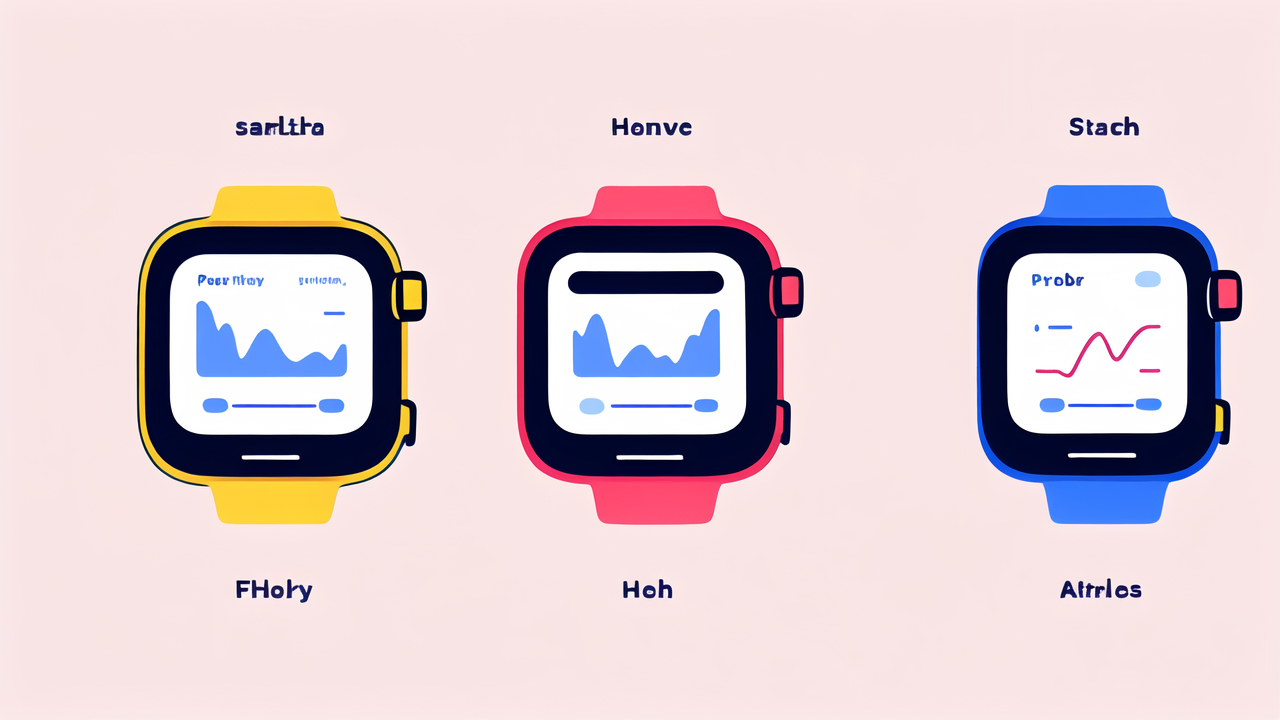The Evolution of Personal Health Wearables
The Emergence of Smart Bands in the United States
Smart bands have become a game-changer in personal health monitoring. They first appeared in the US in the early 2010s. These wearable devices quickly gained popularity among fitness enthusiasts. Early models focused on step counting and basic activity tracking. As technology advanced, smart bands evolved to offer more features. They now provide a wide range of health metrics. The US market saw rapid growth in smart band adoption. This was due to increasing health awareness and technological advancements.

Key Features of Modern Smart Bands
Modern smart bands are packed with features that go beyond simple step counting. They now offer:
- Heart rate monitoring
- Sleep tracking
- Stress level assessment
- Blood oxygen measurement
- GPS tracking for outdoor activities
- Smartphone notifications
These features allow users to gain comprehensive insights into their health. Smart bands can track daily activity levels and provide personalized fitness goals. They also offer reminders to stay active and hydrated. Some advanced models even include ECG capabilities. This feature can detect irregular heart rhythms. The compact design makes them comfortable for 24/7 wear.
The Role of AI and Machine Learning
Artificial Intelligence (AI) and Machine Learning (ML) play a crucial role in smart bands. These technologies analyze the vast amount of data collected by the devices. AI algorithms can identify patterns and trends in a user's health data. This allows for more accurate predictions and personalized recommendations. ML models continuously improve their accuracy as they process more data. They can detect anomalies that might indicate health issues. AI-powered smart bands can provide early warnings for potential health problems. This feature has made them valuable tools for preventive healthcare.
Impact of Smart Bands on Healthcare and Wellness
Enhancing Patient Monitoring in Hospitals
Smart bands have found their way into hospital settings, revolutionizing patient care. They provide continuous monitoring of vital signs without the need for bulky equipment. This allows patients more freedom of movement while staying connected to the monitoring system. Nurses can receive real-time alerts if a patient's vitals change significantly. This quick response time can be crucial in emergency situations. Smart bands also help in reducing the workload of healthcare staff. They automate data collection and provide trend analysis over time.

Encouraging Preventative Care and Wellness
One of the most significant impacts of smart bands is in promoting preventative care. These devices encourage users to adopt healthier lifestyles. They provide real-time feedback on physical activity, sleep quality, and stress levels. This awareness often motivates users to make positive changes. Smart bands can set personalized goals and offer challenges to keep users engaged. Many health insurance companies now offer incentives for using smart bands. This further encourages people to take proactive steps towards better health.
Case Studies: Successful Integration in Health Systems
Several health systems have successfully integrated smart bands into their care protocols. For example, a large hospital in California used smart bands to monitor post-surgery patients. This led to a 30% reduction in readmission rates. Another study in Texas found that diabetic patients using smart bands had better glucose control. A wellness program in New York saw a 20% increase in employee physical activity after introducing smart bands. These case studies demonstrate the potential of smart bands in improving health outcomes.
The Future of Smart Bands in Healthcare
Innovations in Smart Band Technology
The future of smart band technology looks promising. Researchers are working on new sensors that can measure even more health metrics. Some upcoming features include:

- Non-invasive glucose monitoring
- Sweat analysis for hydration and electrolyte balance
- Body temperature tracking
- Blood pressure monitoring without a cuff
These advancements will make smart bands even more valuable for health monitoring. Future devices may also incorporate flexible displays and self-charging capabilities. The goal is to create a comprehensive health monitoring system in a compact, wearable form.
Regulatory Considerations and Data Integrity
As smart bands collect more sensitive health data, regulatory oversight becomes crucial. The FDA has started to provide guidelines for wearable health devices. Manufacturers must ensure data accuracy and protect user privacy. Data integrity is a key concern, as health decisions may be based on this information. Smart band companies are investing in robust security measures. They are also working on achieving medical-grade accuracy in their measurements. The challenge lies in balancing innovation with regulatory compliance.
Interoperability and Open Standards in Health Wearables
The future of smart bands depends on their ability to integrate with broader health ecosystems. Interoperability is key to maximizing the potential of these devices. Open standards are being developed to allow seamless data sharing between different platforms. This will enable smart bands to communicate with electronic health records and other medical devices. The goal is to create a comprehensive health profile for each user. Open standards will also foster innovation by allowing third-party developers to create new applications. This collaborative approach will drive the next wave of advancements in personal health monitoring.




Leave a comment
This site is protected by hCaptcha and the hCaptcha Privacy Policy and Terms of Service apply.